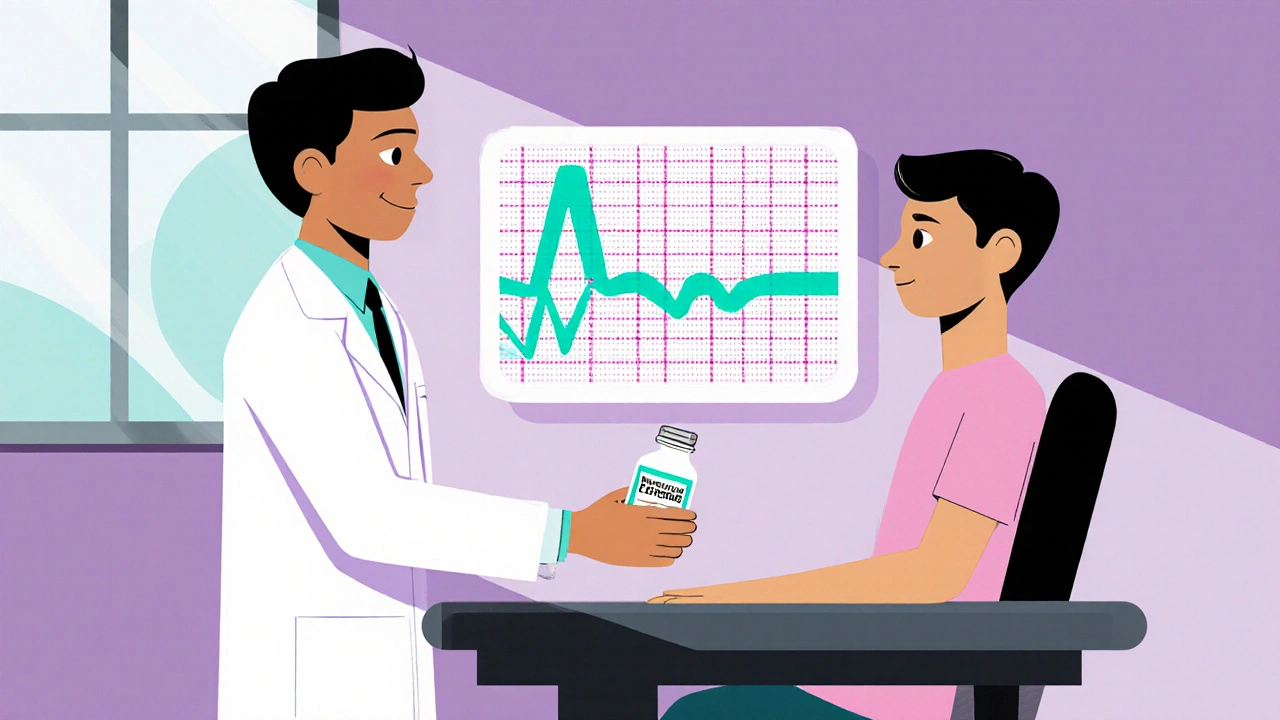Methadone and QT-Prolonging Drugs: How Combined Use Raises Arrhythmia Risk
Explore how methadone combined with QT‑prolonging drugs raises arrhythmia risk, with mechanisms, dosing tips, monitoring steps, and management strategies.
Continue ReadingWhen your heart’s electrical system gets disrupted, it can start beating in a wild, twisting pattern called torsades de pointes, a specific type of life-threatening ventricular arrhythmia characterized by a twisting QRS complex on an ECG. Also known as polymorphic ventricular tachycardia, it doesn’t just feel like a skipped beat—it can collapse your blood pressure, knock you out, or worse. This isn’t just a rare medical curiosity. It’s a real risk if you’re taking certain heart meds, antidepressants, or even some antibiotics.
Torsades de pointes usually shows up when the heart’s recovery time between beats—called the QT interval, the time from the start of the Q wave to the end of the T wave on an ECG, representing ventricular depolarization and repolarization—gets too long. This is called QT prolongation, a measurable delay in the heart’s electrical reset that increases risk of dangerous rhythms. It’s not the QT interval itself that’s dangerous—it’s what pushes it past the breaking point. Common triggers include low potassium, low magnesium, or drugs that block potassium channels in heart cells. Think of it like a traffic jam in your heart’s wiring: one wrong signal, and the whole system goes haywire.
Many everyday medications can quietly stretch that QT interval. Antiarrhythmics like sotalol or dofetilide, certain antibiotics like moxifloxacin, antifungals like ketoconazole, and even some psychiatric drugs like citalopram or haloperidol have been linked to torsades. Even over-the-counter meds like antihistamines (e.g., diphenhydramine) can do it in sensitive people. It’s not about taking one pill—it’s about stacking risks. Someone on multiple QT-prolonging drugs, with low magnesium from chronic diarrhea or diuretics, and maybe an older age? That’s the perfect storm.
And here’s the catch: you might not feel anything until it’s too late. Some people get dizzy, have palpitations, or faint. Others just collapse without warning. That’s why doctors check your ECG before starting certain meds and often test your blood for electrolytes. If you’ve ever been told to avoid grapefruit juice with your heart pill, or to get blood work done every few months, this is why.
What you’ll find in the posts below isn’t just a list of drugs that cause torsades. It’s a practical look at how common medications—like those for depression, cholesterol, infections, or even allergies—can quietly interact with your heart’s rhythm. You’ll see real examples of who’s at risk, what symptoms to watch for, and how to talk to your doctor about balancing treatment with safety. No jargon. No fluff. Just what matters when your heartbeat is on the line.

Explore how methadone combined with QT‑prolonging drugs raises arrhythmia risk, with mechanisms, dosing tips, monitoring steps, and management strategies.
Continue Reading